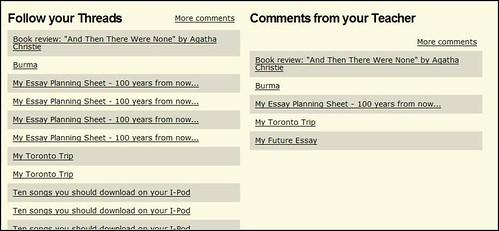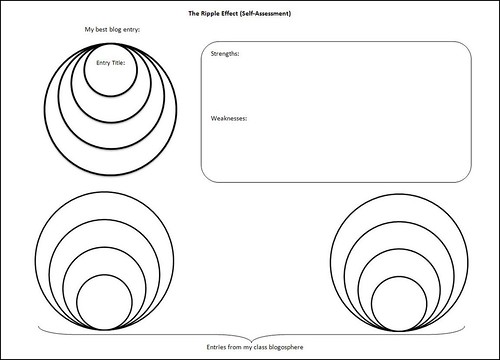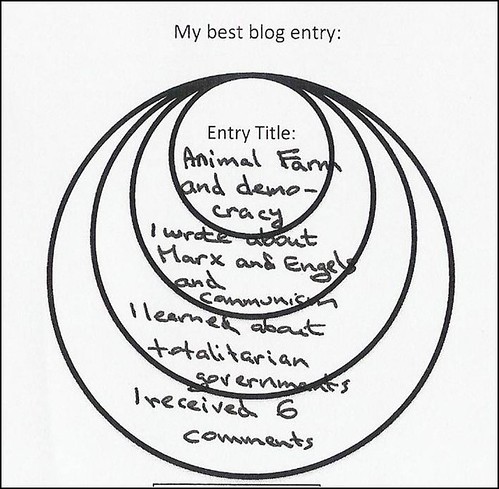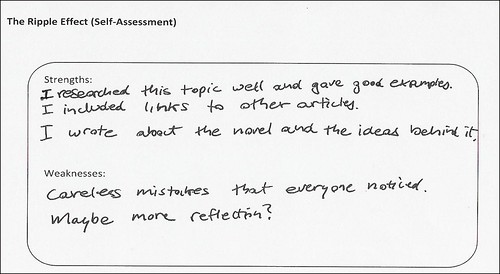Learning to Avoid "School Talk" (Part 1)
Nothing has brought pedagogical theory into greater disrepute than the belief that it is identified with handing out to teachers recipes and models to be followed in teaching .
- John Dewey, Democracy and Education
I've written about this before, but the concept of engaging students in conversations and engaging, as an educator, in conversational assessment, is something that I continue to investigate.
Of course, it is not easy to have meaningful and authentic conversations with students about a literary text that they're reading. First of all, they know very well that I'm an expert - even if I don't see myself as one. Therefore, they are absolutely convinced that they cannot contribute anything to the discussion that I don't already know. No matter how much I try to show them that there are still many aspects of a given topic that I am not very familiar with, students persist in their belief that teachers are experts.
So, I often try to start conversations and create activities that are just as challenging for me as they are for them. This calls for quite a bit of creativity and forces me to abandon tried and tested lesson plans.
Last month, I decided to help my students engage with Anne Frank's The Diary of a Young Girl as more than just a literary text. I wanted them to look at it as an experience, as life written down by someone their own age. They find it difficult not to treat the diary as just another "big book" that they study at school. I wanted them to think about Anne as a person and her diary as a personal record. I wanted them to have an opportunity to engage with the text and think about what Anne's words and experiences meant to them. I wanted to create an avenue for a personal connection - not an easy task in a classroom setting where every text we study is likely to be perceived as a literary text first and a personal experience second. At the same time, I also wanted to engage myself as a participant. I wanted to model the kind of personal engagement I wanted my students to experience.
It occurred to me that one way of doing this would be to create a soundtrack for the diary. So, I spent some time browsing through the SeeqPod and SkreemR archives on the mixwit page . The next day, I walked into our classroom and explained to my students how I got the idea:
I always listen to music when I read. Last night I was listening to Mozart and re-reading parts of the diary for our discussion today. Suddenly, I realized that the piece I was listening to suited the passage I was reading perfectly. It felt almost like the best soundtrack for that specific passage. So, I decided to make a list of songs and classical pieces that, in my opinion, would work well as a soundtrack for Anne's diary.
And then I showed them the soundtrack I had made and we listened to a couple of tracks. I saved my soundtrack using mixwit's highly visual interface and then embedded it in my blog in the grade eight blogosphere:
(Click here if the above widget does not work)
Then, I continued:
I want you to know that this took a long time and I found it very difficult to choose the songs. I kept searching the mixwit database for all kinds of songs that I thought would be perfect, but then I realized that the lyrics didn't really work or that the song was actually very different from how I remembered it. In other words, I had to spend quite a bit of time not just coming up with possible song titles for this but also justifying my choices.
So, I would like you to do the same. Create a mixwit account and then search the database for tracks that, in your opinion, would be perfect for a soundtrack for The Diary of a Young Girl . There's one catch, though: You have to be able to justify your decisions.
And then the conversations started. The one thing that made a huge impact was that I had challenged them to create something that I myself had already done. They could interact with my playlist and learn from the process I had engaged in prior to starting their own. They could critique my work and analyze it before embarking on their own journey of creating a soundtrack. In other words, I had entered the classroom and started the conversation as a participant. Creating my own mixwit tape placed me in the position of a learner. I eagerly shared with them my experiences of using mixwit and choosing the appropriate songs.
The point here is that what they were encouraged to do was not based on an abstract assignment description. I had entered the classroom with evidence of my own meaningful personal engagement with the diary, not just a typed handout explaining what they had to do.
This exercise led to a number of meaningful conversations with my students about Anne Frank, her writing, and our interpretations of her personality and her work. The fact that they all needed to justify their musical choices ensured that the conversations we had focused not just on the music but also, perhaps primarily, on the text. I had many one-on-one conversations with my students in which they talked about specific aspects of Anne's personality and shared their knowledge of popular music with me. They read and listened to the lyrics carefully because they realized that the choices had to be justified and couldn't be in any way offensive to the sanctity of the text written by a girl their age who perished in the Holocaust. This wasn't just about listening to music, it was about making connections, and they all realized that, in order to make them, they had to become very familiar with both the songs and the text - I had encouraged them to become experts.
I was also pleased that this activity gave all of us an opportunity to engage with the diary in a new and unique way. The students still studied the text, they still had to think about Anne as a person and a writer, but they had to do it in a context that rarely enters our classrooms, one that certainly is never present when we discuss literary texts.
I learned that entering the community as a participant allowed me to have conversations with my students that they did not perceive as instructional. Yes, they were talking to Mr.Glogowski about their songs and their reasons for picking them, but it did not feel like school talk.
Here are some examples of what they created:
... and, of course, the best thing about this was that there was no rubric or evaluation sheet. Why? Because when you listen to student soundtracks for The Diary of a Young Girl and the music works, the music fits, you just know the students did a great job ... and they do too - not because they received a rubric with a high mark, but because their work emerged from meaningful conversations with each other and the teacher.

 (Click
(Click 


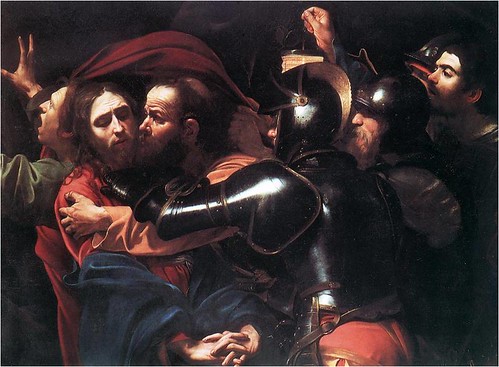 Caravaggio, The Taking of Christ
Caravaggio, The Taking of Christ 